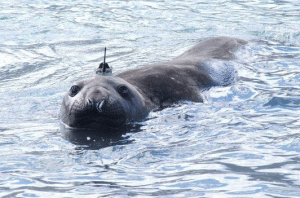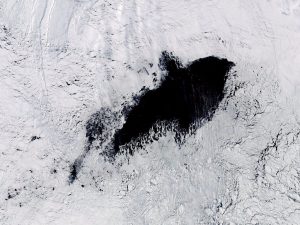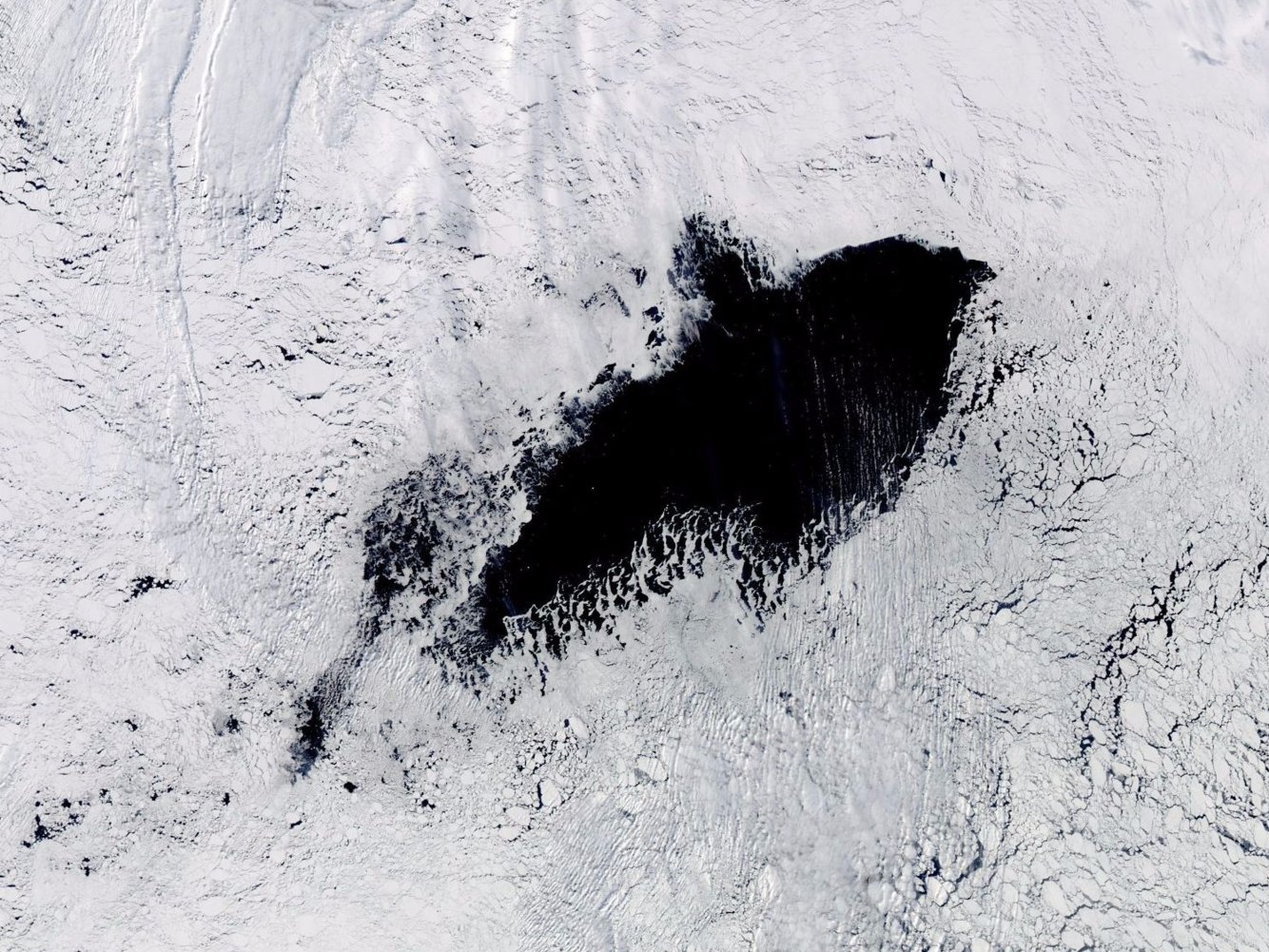Source: Campbell, E. C., E. A. Wilson, G. W. Kent Moore, S. C. Riser, C. E. Brayton, M. R. Mazloff and L. D. Talley (2019), Antarctic offshore polynyas linked to Southern Hemisphere climate anomalies. Nature, doi:10.1038/s41586-019-1294-0
Sea ice plays an important role in the climate system by modulating interactions between the ocean and atmosphere. For example, sea ice shields the surface ocean from winds and reflects a lot of sunlight due to its white color. Through mechanisms such as this, sea ice affects the ocean’s uptake of heat and nutrients. Therefore, accurately predicting sea ice extent and thickness is crucial to understanding and modeling global climate.
In some regions of the Antarctic, massive holes in the sea ice, called polynyas, can form. In 2016 and 2017 a large polynya formed in the Weddell Sea over a plateau on the seafloor called Maud Rise – the largest since the 1970s. What caused the polynya to form and why was it so large in these years? A group of scientists led by Ethan Campbell at the University of Washington investigated these questions.
The study uses data collected by robotic floats that drift around the Southern Ocean, as well as measurements collected by seals! Elephant seals outfitted with data-collecting instruments, like the one in the picture below, are an important source of data in ice-covered regions that are difficult to reach by ship.

The measurements showed that the waters over Maud Rise were particularly salty during the years in which the polynya formed. This is important since the density of seawater depends on its salinity and temperature – namely, saltier and colder water is more dense. The researchers suggest that high salinity, combined with strong storms, is responsible for opening the hole in the ice in 2016 and 2017. The storms mix the salty water up to the surface, where it gets cooled and sinks, being replaced by warmer water from below. This sets up a feedback loop that prevents ice from re-forming.
Although the polynya formation is a local process, it could have large impacts on the climate system. For example, the waters being brought up to the surface in the polynya are enriched in carbon since they haven’t been in contact with the atmosphere for hundreds of years or more. This sequestered carbon can be released back into the atmosphere when the water gets drawn up by the polynya.

Can we expect more frequent polynyas in the future or were the 2016 and 2017 events unique? According to the researchers, the answer is not clear. On the one hand, the trend of shifting wind patterns over the Southern Ocean may increase the mixing that is necessary for polynya formation. However, increased freshwater input from Antarctic ice sheet melt could make the ocean more stratified and prevent mixing, subsequently preventing polynya formation. Trying to tease out these competing mechanisms is important going forward.
Sea ice extent and concentration is driven by a complex combination of circulation and mixing, as well as interaction with the atmosphere. Holes in the sea ice, called polynyas, are particularly important since they are a direct conduit between the surface and deep ocean. Therefore, accurately describing the dynamics of these systems, through studies like this one, is critical to improving future climate predictions.
I’m a physical oceanography PhD student at Scripps Institution of Oceanography in La Jolla, California. I use a combination of numerical models, observations, and remote sensing to investigate the role of the ocean in climate. I’m particularly interested in Southern Ocean dynamics, including air-sea-ice interactions and physical controls on biogeochemistry.


